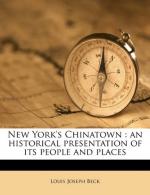|
This section contains 353 words (approx. 2 pages at 300 words per page) |

|
Unity. Mountains, deserts, rivers, and other topographical features have had a profound effect upon China throughout its history. They frequently represented insurmountable barriers; the southern hills in particular were havens for various rebel groups during the period 617- 1644. However, four major dynasties (Tang, Song, Yuan or Mongol, and Ming) managed to arise and achieve cultural and political unity from the seventh to seventeenth centuries. Moreover, these empires achieved economic self-sufficiency.
Isolation. The Pacific Ocean is the source of moistureladen winds that provide China with rain, but it is even more effective in isolating China than are the great land masses to the north and west. To the east the Koreans and Japanese were the only civilized people with whom trade was possible. Culturally, both of these groups borrowed more from than contributed to China Proper. The Pacific coast of North America was too...
|
This section contains 353 words (approx. 2 pages at 300 words per page) |

|




